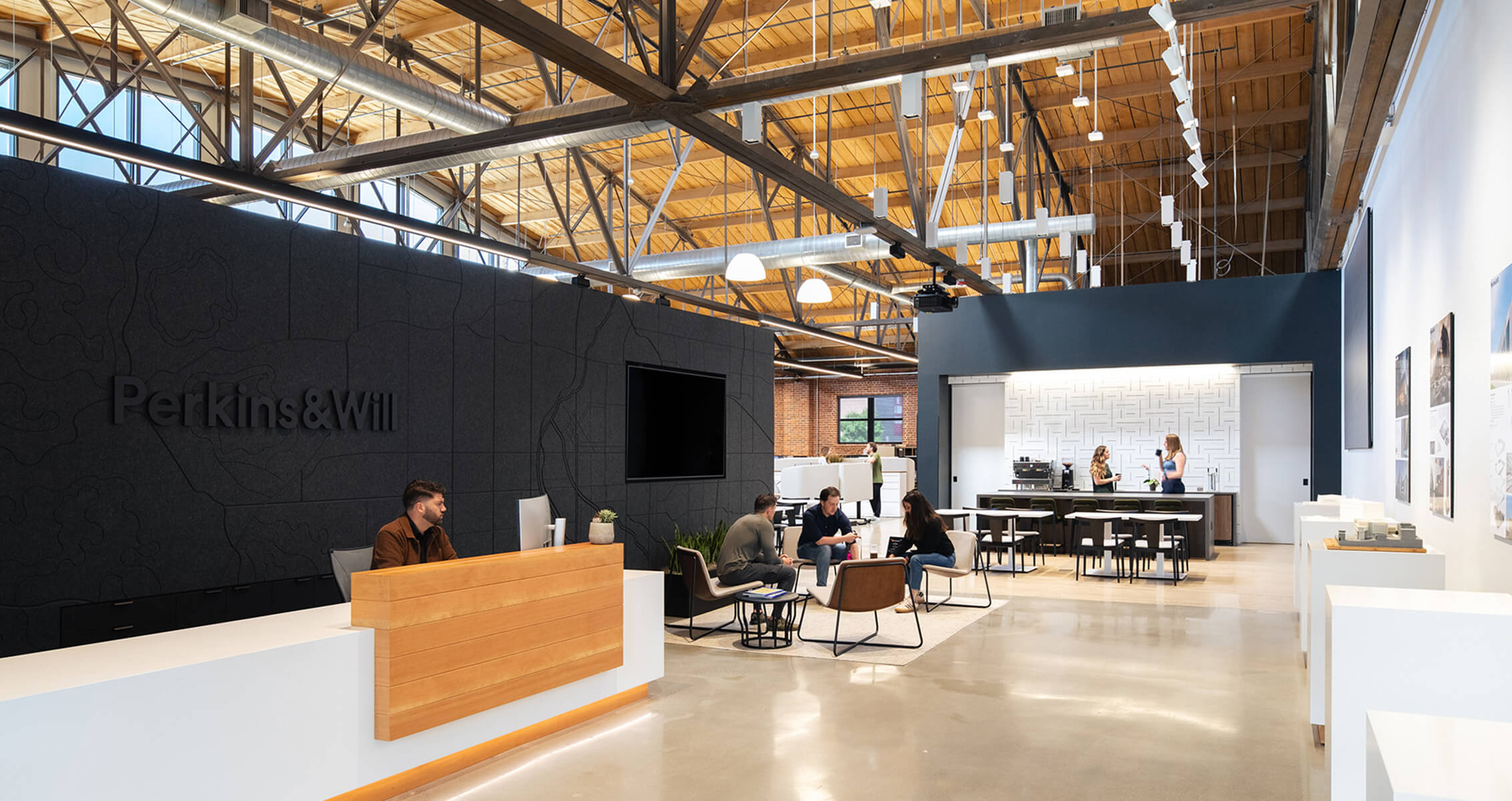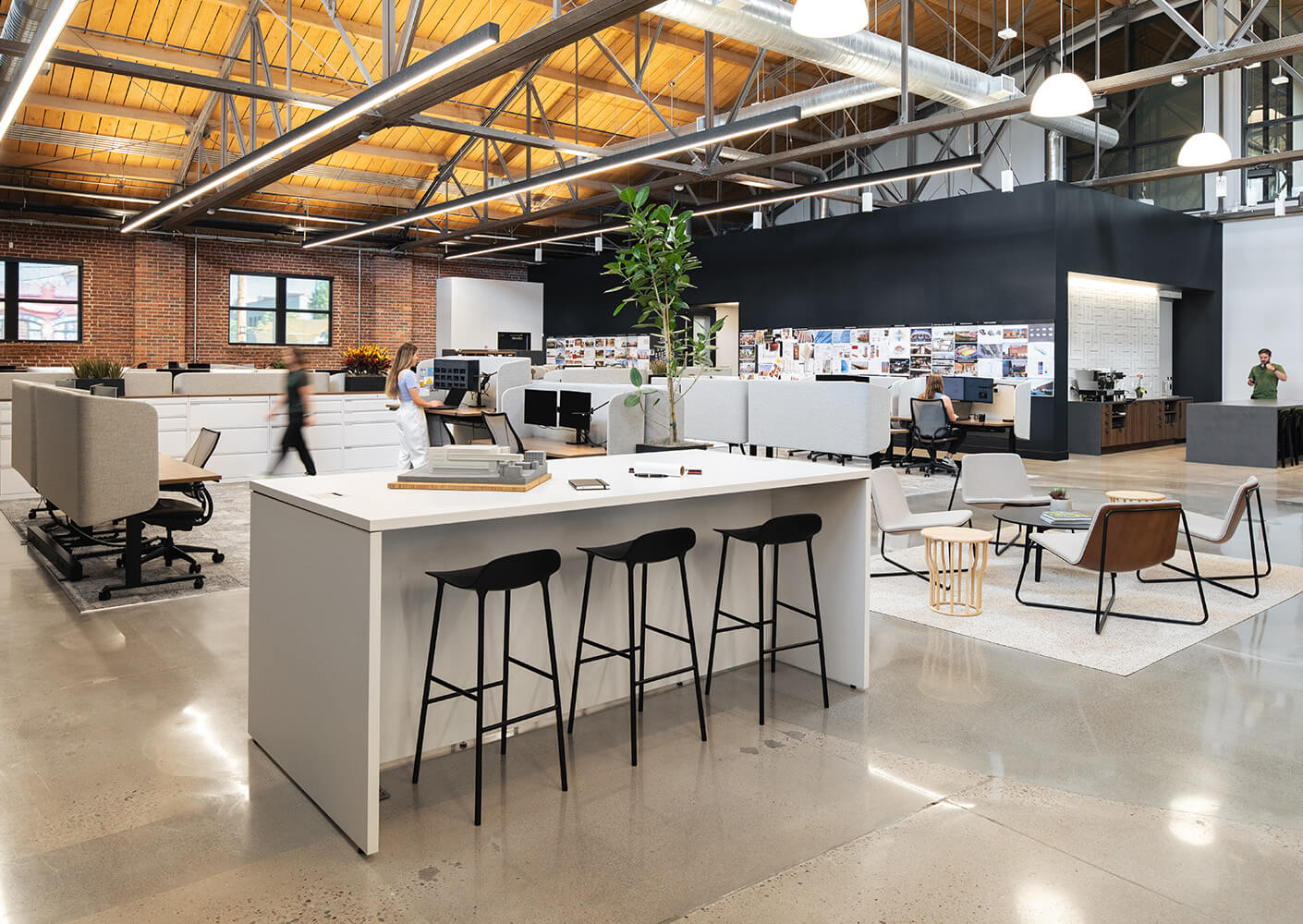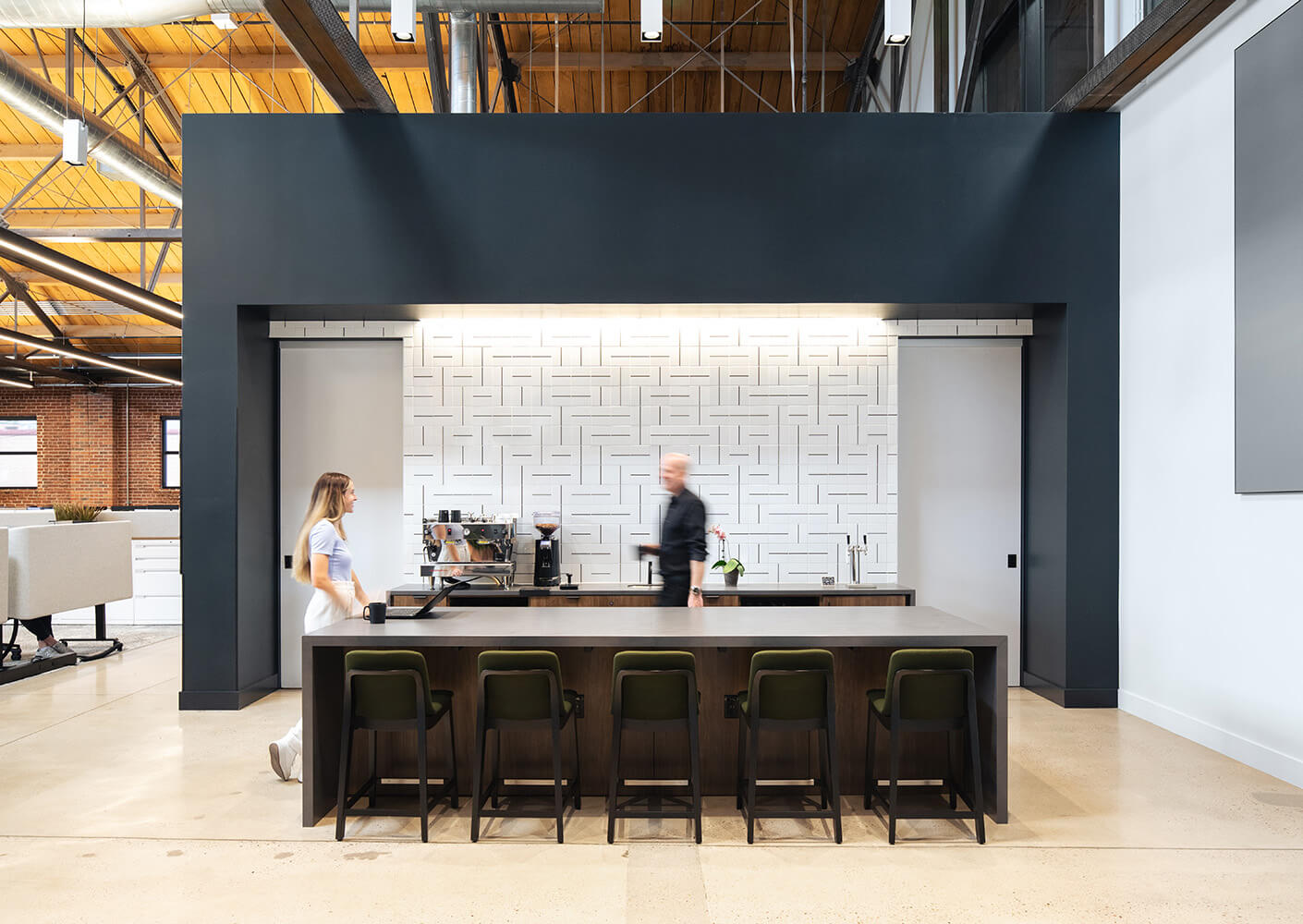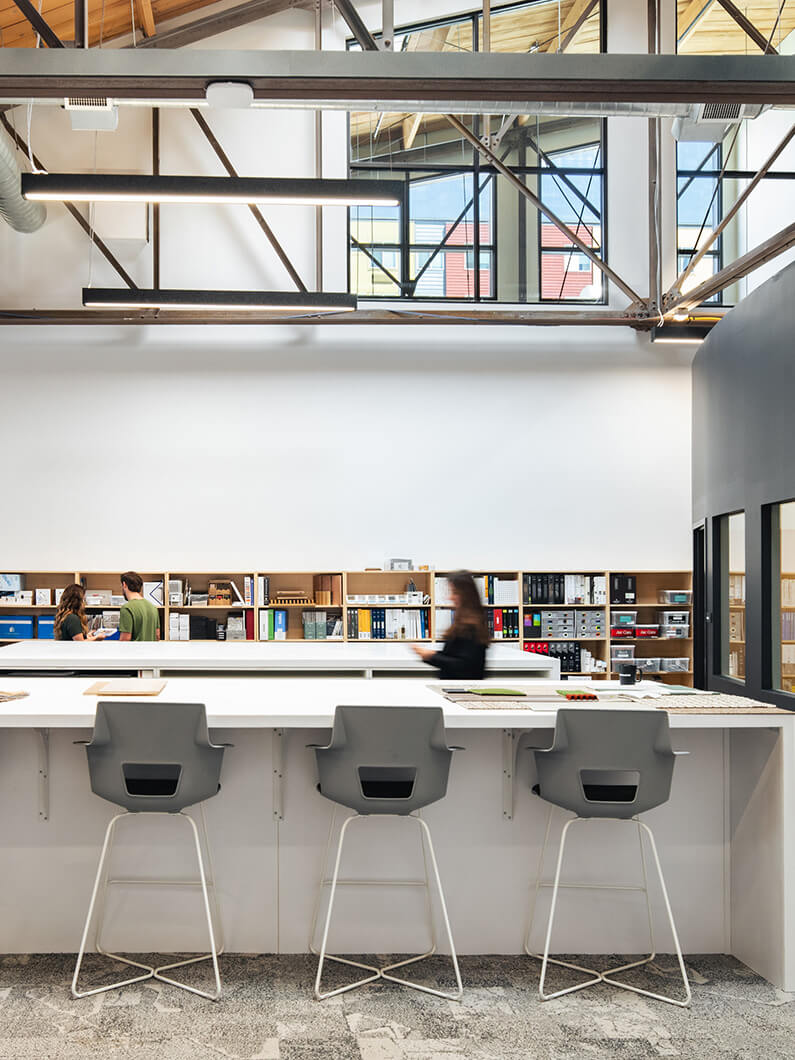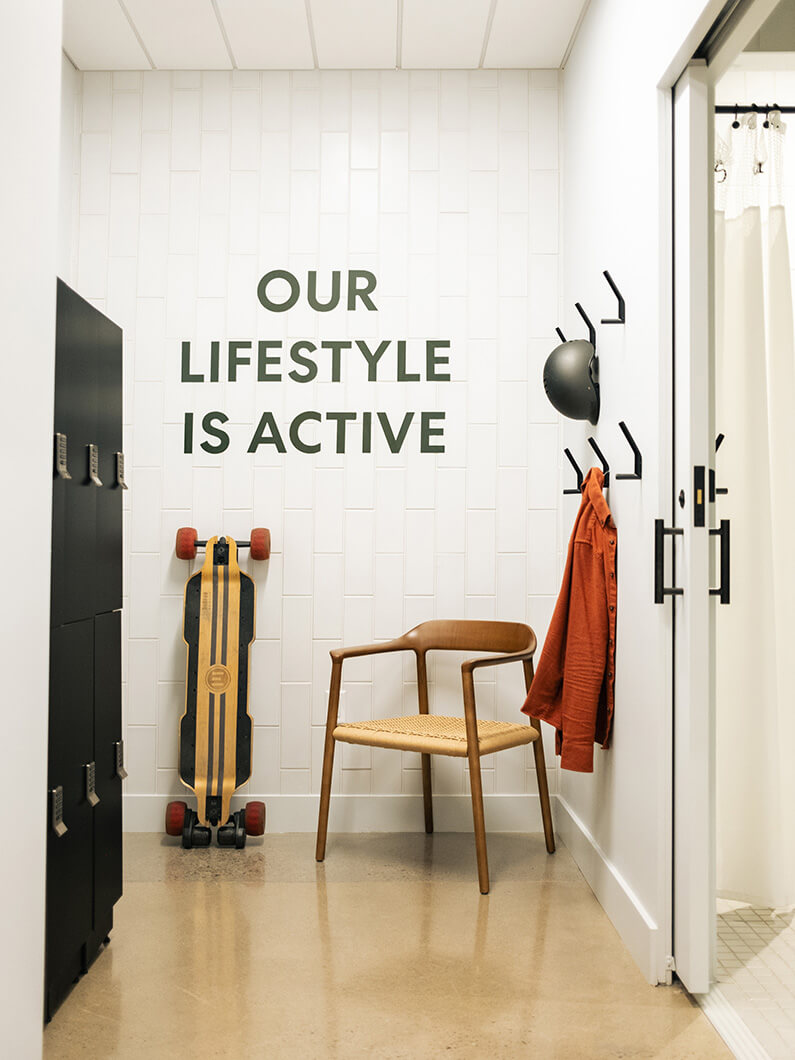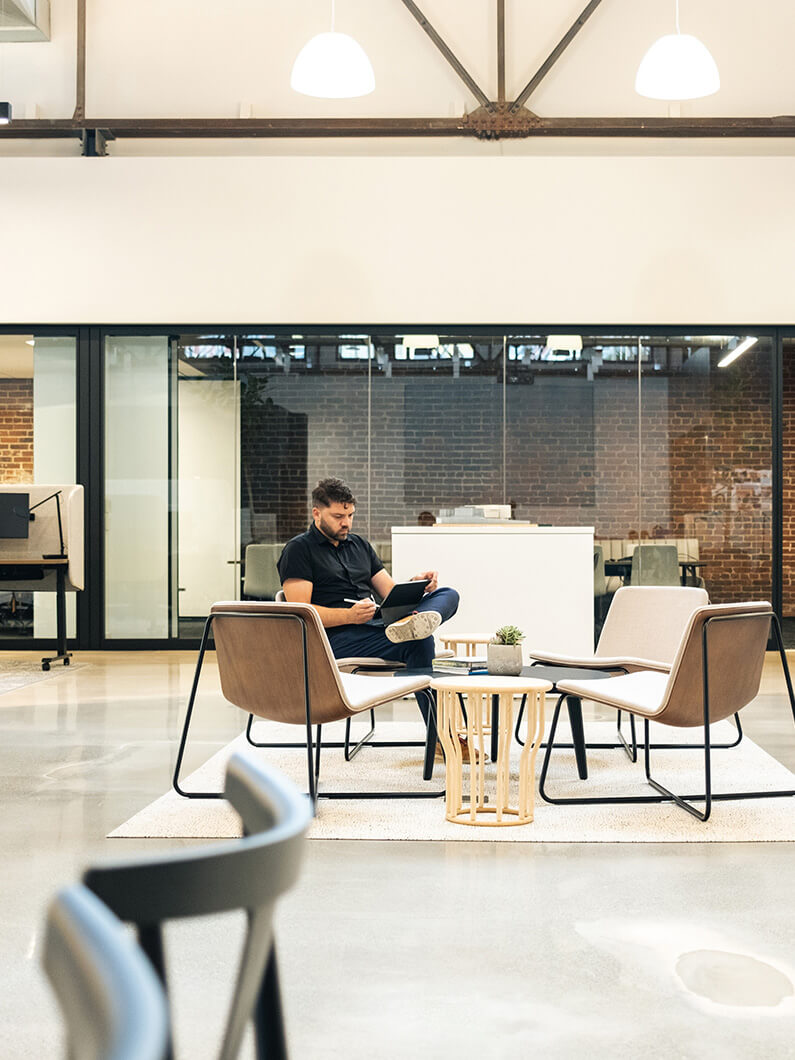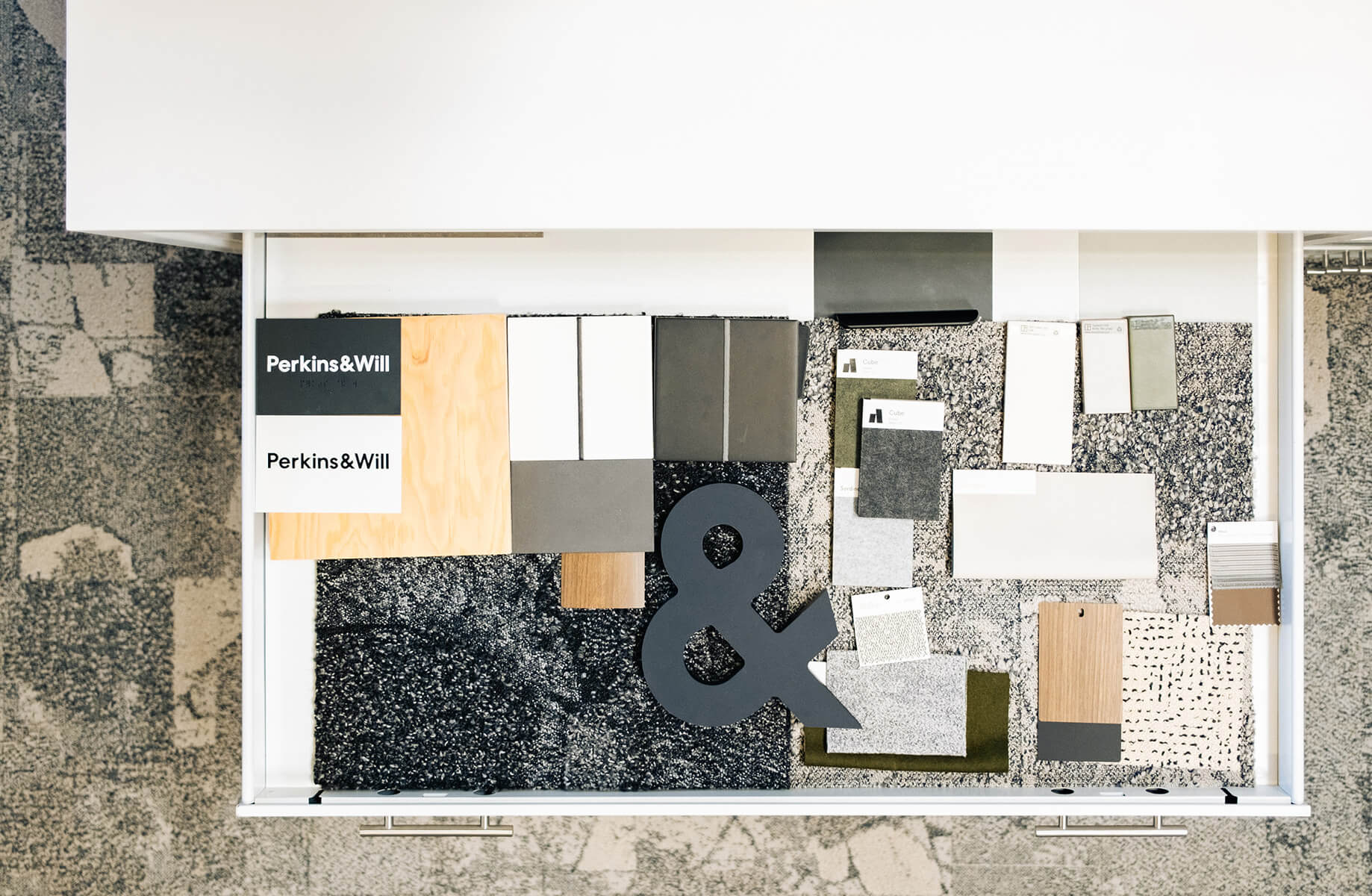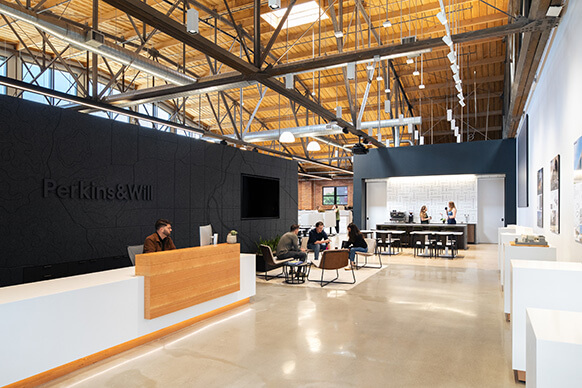This spring, our Denver studio unveiled their newly renovated office space. Designed to promote wellness and provide the studio and their clients with a truly universal environment, the reimagined workplace celebrates the legacy of the historic building through human-centric design principles and our living design framework.
“We have a wide variety of studio members with varying interests and needs. We wanted to make sure this space supports the spectrum of needs within our studio and the broader community,” says Robin Ault, Design Director, and lead designer on the renovation project, “Through tailored design strategies we have transformed our workplace into a welcoming and effective environment for a diverse set of people.”
Embodying collaboration, the new workplace removed all previously walled offices, creating a flexible and open concept plan. Versatile surfaces make it easy to pin-up and review work. Intentional spaces like a wellness room and mothers’ room were integrated to support employee well-being. A café, community seating area, bike racks, and a shower were also included to accommodate the team’s active lifestyles.
